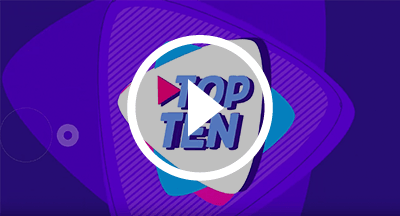Automate Attendance Letters and Keep Kids Learning

|
Erin Werra Blogger, Researcher, and Edvocate |
With another first day of school just around the corner, now is a great time to start thinking about ways to keep students in class. Research has confirmed that missing school impacts a student’s ability to thrive in the classroom. But with so many reasons for students to miss class, how can you better ensure they show up?
Follow this three-step process to start turning the tide.
Step 1: Raise awareness
The first step is raising awareness of the impact chronic absenteeism has on student learning. Chronic absenteeism can sneak up on students and families. In fact, as little as two days away each month will result in a 10% absenteeism rate—defined as chronically absent.The Ed-Fi alliance offers a few data points to illustrate the importance of K12 attendance:
- Over seven million students, or roughly 1/6, have missed 15 or more school days.
- About 10% of K-1st grade students are chronically absent, which is exacerbated by childhood illness and the motivation to keep others healthy (in some places, it is a huge faux pas to attend school while ill).
- While early childhood years set a strong foundation for learning and aren’t to be missed, chronic absenteeism in later grades makes a student seven times more likely to drop out of school.

Photo credit: Ed-Fi Alliance
Step 2: Diagnose the root cause
The next step in easing the absenteeism habit is determining the true obstacles to attendance at school. An absence is a symptom, not a diagnosis. Sure, there are plenty of kids who simply don’t want to go to class, but for most, applying solutions rather than blame can help reduce absenteeism instead of fanning the flames.The common reasons behind chronic absenteeism can stem from health concerns or a lack of access to transportation, clean attire, and safety. Some of these struggles may be out of your district’s control, but keep in mind the goal of healthy kids attending school regularly. Many of the solutions families are looking for can be met with school- and community-powered programs. For example, if students need to do laundry but don’t have access to facilities, consider offering before- and after-school access (maybe a family and consumer education classroom special project). As another example, you could consider opening an on-campus food pantry to keep families close to the resources they need.
Step 3: Automate attendance letters
You can eliminate surprises by automating attendance letters to students and guardians. That way, both parties will always know where students stand on attendance. It’s easy to set up this process in Skyward. We’ve outlined the steps below for Qmlativ and SMS 2.0.Qmlativ
There are three main items to set up for attendance letters in Qmlativ:Attendance letter templates: Within the template, your district can determine how you want the header to display on your attendance letters. You can also configure additional information for the letter.

Attendance thresholds: Set attendance thresholds to determine which attendance type your district wants to track for attendance letters, along with a date range. For example, if your district only counts unexcused absences, you can specify this when generating attendance letters.

Threshold: Thresholds specify how many instances of this attendance type are needed before an attendance letter is generated. This is also where the bulk of the attendance letter is set up. You can customize the greeting, body, and footer of the letter and add any translations.

SMS 2.0
There are also three main components when setting up attendance letters in SMS 2.0:Type of attendance letter: You can choose from three different types of attendance letters. By Class will target the specific classes on a student’s schedule, By Period will target the specific period on the student’s schedule, and By Totals will look for the total number of absences by pulling the number of periods absent/tardy and/or the total number of days absent.

Attendance Codes: Next, you’ll set up Attendance Codes. This consists of Threshold Codes, which are the number of absences a student must acquire during a specific time frame to generate an attendance letter. You'll also set up Letter Attendance Type Codes to define which absence codes will count during the attendance letter process. You can choose whether you want to create Date Range Codes, which set a fixed start and end date or a variable date range.

Scheduling: Based on the codes you created, you can now schedule your attendance letters. You can set up Scheduling Parameters, further differentiate between your letter parameters, view letters previously sent, and monitor any changes made to your letter since it was created.

Best practices for attendance letters in Skyward
Send attendance letters to parents and students whenever a student meets an attendance threshold your district has in place. For example, if a student receives a warning when they accumulate three tardies in a given class, an attendance letter could be generated and sent to that student and their guardian.If you start to see a trend that absenteeism is getting out of hand in your district, consider sending automated letters to everyone. A similar proactive strategy could pay off at the end of semesters or the beginning of a new school year. While not every student will have a long list of absences and some may not have much choice, it’s an opportunity to spark a conversation about why school attendance matters.
When scheduling attendance letters, we recommend spacing them out, so guardians don’t receive too many notifications at once.
Avoid a scheduled start time of 2:00 AM. Most of Skyward’s scheduled tasks default to 2:00 AM. Since attendance letters can create a lot of scheduled tasks, choosing a different time will help make sure you don’t bog down the system.
You can set up automated emails to also send to student contacts, general staff, and/or system contacts to keep everyone in the loop when an attendance letter is generated.
In addition to emailing attendance letters, you can also post them to Family Access. They will appear in the Portfolio tab and will be available for guardians to view electronically.
Be sure to include all relevant information in your attendance letters. This could include the name of the student/guardian, dates/periods of absences, information about potential consequences, who to contact at the district to discuss absences, and any other items you may wish to communicate. You could also consider adding stats from the “raise awareness” section above. That way, when guardians are notified of their child’s absence, they’ll also be reminded of how important it is to get their student back in class.
We hope the three-step process we’ve outlined here will help your district take steps toward decreasing absenteeism this school year. Reducing student absences requires a lot of planning and care. Unfortunately, there’s no fix that’s quick and easy—but then again, it’s said nothing worth having or achieving ever is.
Follow-up resource: Pitch the idea
Here's a handy dandy one-page pitch to get the ball rolling on absenteeism letters.Thinking about edtech for your district? We'd love to help. Visit skyward.com/get-started to learn more.
|
Erin Werra Blogger, Researcher, and Edvocate |
Erin spent sixteen+ years learning, then launched a professional career delving into the inner workings of practice, data, and edtech in K-12 schools. She is always looking to deliver more insights to help you work smarter every day.

 Get started
Get started





